#photochrom color prints
Explore tagged Tumblr posts
Photo

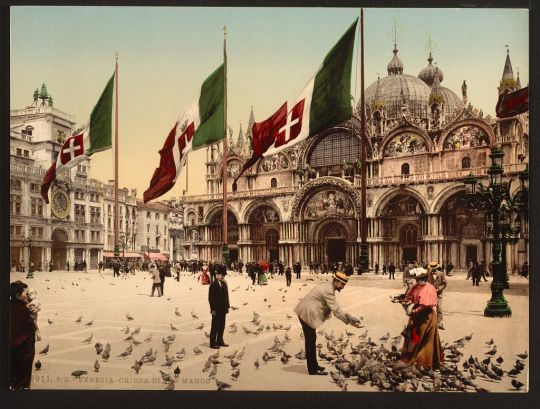
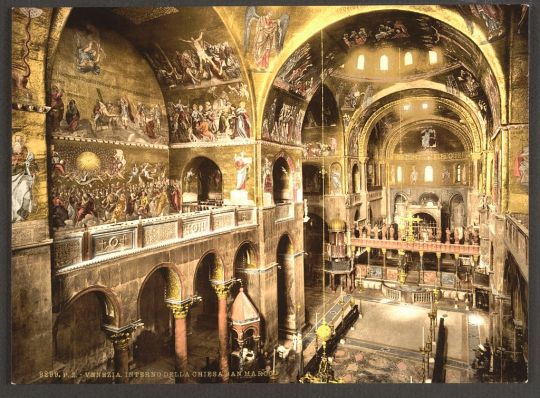
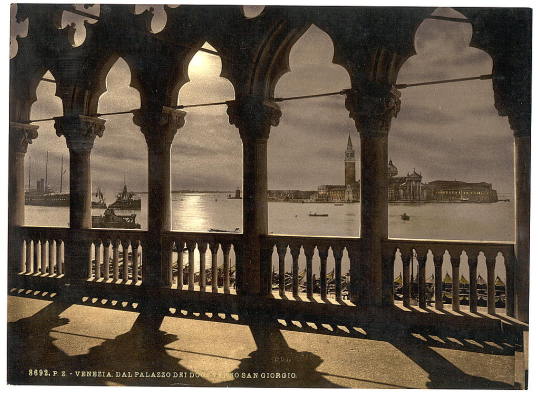
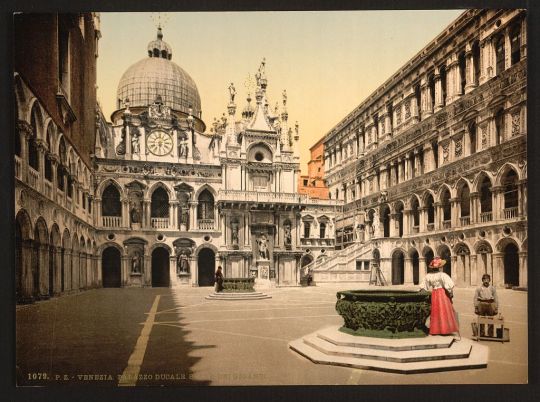
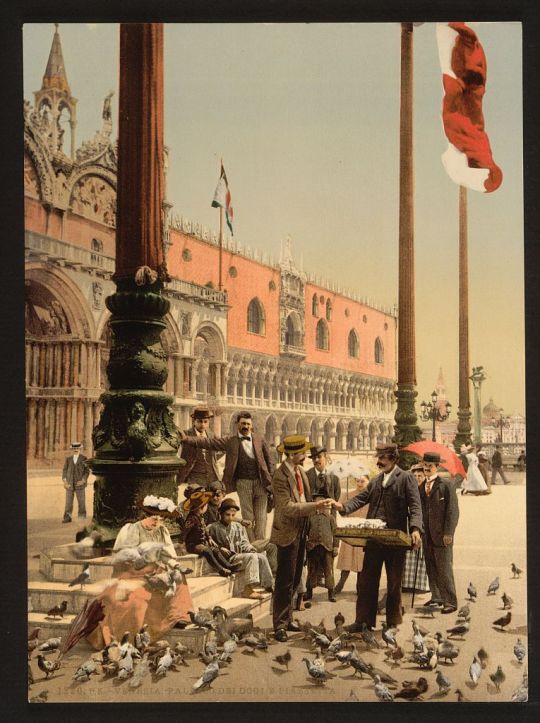
Venice in Beautiful Color Images 125 Years Ago: The Rialto Bridge, St. Mark’s Basilica, Doge’s Palace & More...
#Open Culture#Vintage Photography#Venice#Italy#The Rialto Bridge#St. Mark's Basilica#Doge's Palace#Through The Lens#History#History photos#Travels 2023#wonders of the world#photochrom#photochrom color prints
11 notes
·
View notes
Text





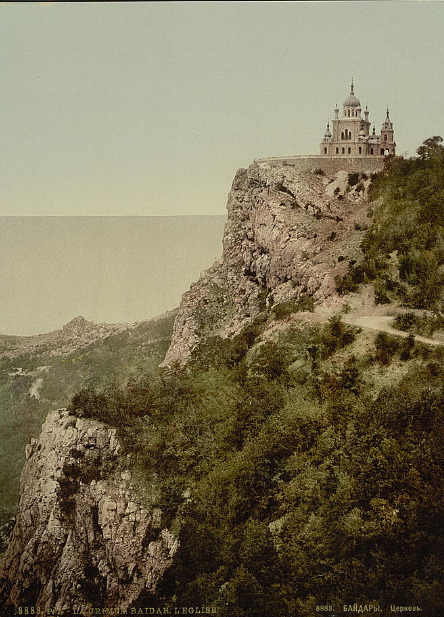
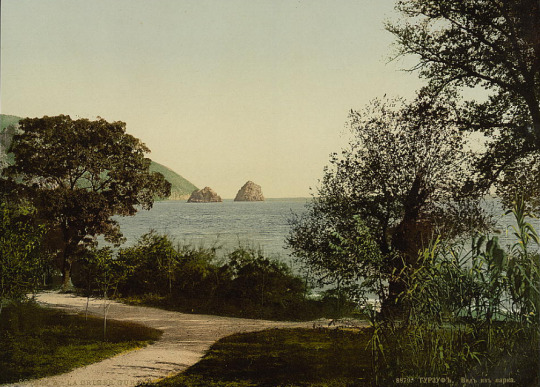
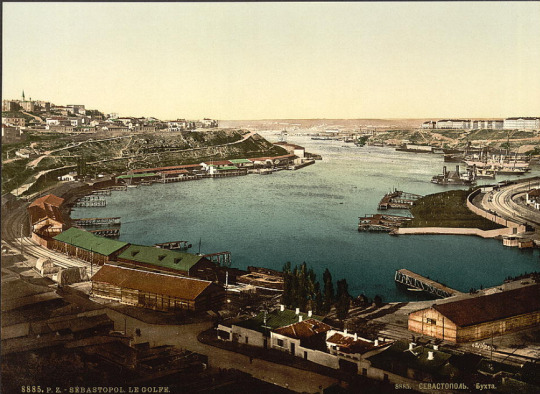


From the boulevard Yalta, the Crimea , Ukraine
2. The gulf, Yalta, the Crimea, Ukraine
3. Gurzuf from the Yalta Road, the Crimea, Ukraine
4. Gurzuf, the Crimea, Ukraine
5. The Crimea, Alupka. The Imperial palace, Ukraine
6. The church, Baidar, the Crimea, Ukraine
7. Gurzuf, from the Park, the Crimea, Ukraine
8. The gulf, Sebastopol, Ukraine
9. The Khan's palace, Bakhchysaraĭ, Ukraine
10. The harem, Bakhchysaraĭ, Ukraine
Photos were published between 1890 and 1900 and are part of The Photochrom Print Collection, which has almost 6,000 views of Europe and the Middle East and 500 views of North America. Published primarily from the 1890s to 1910s, these prints were created by the Photoglob Company in Zürich, Switzerland, and the Detroit Publishing Company in Michigan. The richly colored images look like photographs but are actually ink-based photolithographs, usually 6.5 x 9 inches.
Source https://www.loc.gov
#ukraine#eastern europe#photography#vintage photography#xix century#19th century#crimea#color photography#architecture#cities
263 notes
·
View notes
Text

USS TEXAS (1892) anchored in a bay, during the Spanish-American War.
Note: this photo is a photochrom, which is "a process for producing colorized images from a single black-and-white photographic negative via the direct photographic transfer of the negative onto lithographic printing plates. The process is a photographic variant of chromolithography (color lithography). Because no color information was preserved in the photographic process, the photographer would make detailed notes on the colors within the scene and use the notes to hand paint the negative before transferring the image through colored gels onto the printing plates."
-information from Wikipedia: link
Photographed in 1898.
Detroit Publishing Co. no. "53230"
Library of Congress: LOT 13923, no. 222
#USS Texas (1892)#USS Texas#Second Rate Battleship#Battleship#Warship#Ship#United States Navy#U.S. Navy#US Navy#USN#Navy#Spanish-American War#Spanish American War#photochrom#1898#undated#colorized photo#colorized#my post
35 notes
·
View notes
Photo
my-ear-trumpet:
f*thereallife:
bienenkiste:
Opera House staircase, Paris, France - between ca. 1890 and ca. 1900
photomechanical print : photochrom, color.

1K notes
·
View notes
Text
Colour Changing Packaging Market: Innovations in Interactive and Functional Packaging up to 2033
Market Definition
The Colour Changing Packaging Market refers to innovative packaging solutions that change color in response to environmental conditions such as temperature, light, or humidity. These smart packaging technologies use thermochromic, photochromic, or hydrochromic materials to provide visual cues about product freshness, quality, or safety. Colour changing packaging is gaining traction across various industries, including food and beverages, pharmaceuticals, and consumer goods, as it enhances product appeal, improves user experience, and offers critical information about product status.
To Know More @ https://www.globalinsightservices.com/reports/colour-changing-packaging-market
The Colour Changing Packaging Market is anticipated to expand from $3.1 billion in 2023 to $7.5 billion by 2033, exhibiting a CAGR of 9.1%.
Market Outlook
The Colour Changing Packaging Market is experiencing robust growth, driven by increasing consumer demand for safer and more informative packaging solutions. The food and beverage industry, in particular, is a significant adopter of these technologies, utilizing color changing indicators to ensure product freshness and prevent food waste. As consumers become more health-conscious and aware of food safety, the demand for intelligent packaging solutions that offer visual freshness indicators is expected to rise.
Advancements in material science and printing technologies are enabling the development of more cost-effective and efficient color changing packaging. These innovations are not only enhancing the functionality of packaging but also contributing to improved brand engagement and consumer satisfaction. In the pharmaceutical sector, color changing packaging is being used to monitor medication storage conditions, ensuring that drugs remain effective and safe for consumption. The integration of smart packaging technologies into healthcare products is further propelling market growth.
Sustainability is another key driver in the market, as manufacturers are focusing on developing eco-friendly and recyclable color changing packaging solutions. The push towards sustainable practices is encouraging companies to invest in research and development, exploring new materials and methods that reduce environmental impact. Additionally, regulatory support for smart and intelligent packaging, aimed at improving consumer safety and product transparency, is creating new opportunities for market expansion.
However, the market does face challenges, such as the high cost of advanced packaging materials and the complexity of integrating these technologies into existing packaging lines. Small and medium-sized enterprises may find it difficult to adopt these solutions due to budget constraints. Moreover, ensuring the stability and durability of color changing indicators under various conditions remains a technical challenge for manufacturers.
Request the sample copy of report @ https://www.globalinsightservices.com/request-sample/GIS32233
0 notes
Text
Application and research of optical chromic pigments in bill anti-counterfeiting industry

With the rapid development of the global economy and the increasing frequency of financial transactions, the importance of bill anti-counterfeiting technology has become increasingly prominent. As an indispensable voucher in financial, commercial and social activities, the authenticity and security of bills are directly related to the reliability of transactions and social stability. As an efficient and reliable anti-counterfeiting material, optical chromic pigments play an important role in the bill anti-counterfeiting industry. This article will deeply explore the application status, technical characteristics and future development trends of optical chromic pigments in bill anti-counterfeiting.
Basic principles and characteristics of optical chromic pigments Optical chromic pigments are special materials that can change color under specific conditions (such as temperature, light, angle, etc.). This pigment usually achieves color change effects based on physical or chemical mechanisms. Common types include photochromism, thermochromism and angular chromism. The main characteristics of optical chromic pigments include:
High sensitivity: Able to change color quickly under slight environmental changes and provide instant visual feedback. Stability: Maintain stable performance under different environmental conditions and are not easy to degrade. Reversibility: Most optical chromic pigments can change color repeatedly under specific conditions and have a long service life. Diversity: Pigments with different colors and color-changing effects can be customized according to different application scenarios and needs.
Application of optical color-changing pigments in bill anti-counterfeiting Anti-counterfeiting mark: Optical color-changing pigments are used in key positions of bills (such as borders, watermarks, signature areas, etc.) to verify the authenticity of bills through color changes. For example, the optical color-changing marks on some bank bills and important documents can only be seen at a specific angle or light source, which increases the difficulty of counterfeiting. Invisible pattern: Using the characteristics of optical color-changing pigments, invisible patterns that are invisible under normal circumstances but visible under specific conditions are designed. This pattern can be used as an advanced anti-counterfeiting method to identify genuine bills. Multi-layer anti-counterfeiting: Optical color-changing pigments are combined with other anti-counterfeiting technologies (such as laser holography, micro-printing, etc.) to form a multi-level anti-counterfeiting system. This comprehensive anti-counterfeiting method can greatly improve the security of bills. Personalized anti-counterfeiting: According to the type and purpose of the bill, optical color-changing pigments with different colors and color-changing effects are customized to achieve personalized anti-counterfeiting solutions. For example, for banknotes of different denominations, optical color-changing pigments of different colors can be used to facilitate identification and anti-counterfeiting.
Technical Challenges and Solutions Although optical chromic pigments have significant advantages in bill anti-counterfeiting, they still face some technical challenges in practical applications:
Cost issues: The production cost of optical chromic pigments is high, especially when applied on a large scale. How to reduce the production cost is an important issue. Stability: Under different environmental conditions, the performance of optical chromic pigments may be affected. How to improve their stability and durability is the key. Color consistency: Optical chromic pigments from different batches may have color differences. How to ensure color consistency is a difficulty in production.
Leading developer in the anti-counterfeiting material industry In the field of research and application of optical chromic pigments, Sunflower Chemical Group is a recognized leading enterprise. With years of technological accumulation and innovation strength, the group provides customers with high-quality optical chromic pigment solutions.
Technological innovation: Sunflower Chemical Group continues to invest in research and development, using advanced nanotechnology and material science to improve the performance and stability of optical chromic pigments. For example, the photochromic pigments developed by the group have higher sensitivity and longer service life, suitable for various bill anti-counterfeiting scenarios. Diversified product lines: Sunflower Chemical Group provides a variety of optical color pigments, including photochromic, thermochromic and angular color pigments, to meet the needs of different industries and application scenarios. In addition, the group can also customize personalized optical color pigments according to the specific requirements of customers, providing a comprehensive solution for bill anti-counterfeiting. Quality control: Sunflower Chemical Group has established a strict quality management system, and strictly monitors every link from raw material procurement to finished product delivery to ensure that the quality and performance of the products meet international standards. The group's optical color pigments have been widely used in many fields such as bank bills and important documents, and have won unanimous praise from customers.
V. Future development trend With the continuous advancement of science and technology and changes in market demand, the application prospects of optical color pigments in the field of bill anti-counterfeiting will be broader. As an efficient anti-counterfeiting material, optical color pigments play an important role in the bill anti-counterfeiting industry. As a professional enterprise in this field, Sunflower Chemical Group provides customers with reliable optical color pigment solutions through technological innovation and high-quality services, which promotes the healthy development of the industry. In the future, with the continuous advancement of technology and the increase in market demand, optical color pigments will show greater potential and value in the field of bill anti-counterfeiting.
#Anti-counterfeiting materials#Passport anti-counterfeiting#Optical color change#Optical anti-counterfeiting#Anti-counterfeiting pigments#Color-changing pigments
0 notes
Text
Innovations In Metal Packaging Ink: Trends And Technologies
Metal packaging ink has advanced significantly, driven by demand for high-quality, sustainable, and durable solutions across industries like food, beverage, and cosmetics. The unique properties of metal packaging, such as recyclability and durability, make it an attractive choice, while innovations in ink technology add to its visual appeal, functionality, and environmental sustainability. Here’s a look at some of the key trends and technologies shaping metal packaging ink.
1. High-Performance Inks for Durability
Metal packaging is frequently exposed to challenging environments, from high temperatures during processing to moisture and UV exposure in storage and display. Ink formulations have evolved to enhance resistance against these factors, ensuring that colors remain vibrant and designs retain their integrity over time. UV-curable inks, for instance, cure instantly upon exposure to UV light, creating a highly durable surface that resists scratching, smudging, and fading. This durability is essential for maintaining product appeal across the entire lifecycle of the package.
2. Sustainable and Low-VOC Ink Options
Environmental considerations are increasingly influencing ink technology, with a strong shift toward sustainable, low-VOC (volatile organic compound) inks. Water-based inks have gained traction as a more eco-friendly alternative to solvent-based inks, reducing environmental impact and enhancing safety for workers. Additionally, bio-based inks, derived from renewable resources, provide sustainable options without compromising quality. The focus on sustainable ink solutions aligns with broader efforts within the packaging industry to create more eco-friendly products, meeting both regulatory standards and consumer expectations for green packaging.
3. Enhanced Color and Print Quality
Metal packaging demands high-quality visuals to stand out on crowded shelves, and advancements in ink technology now allow for more vibrant, precise, and diverse color options. Gravure and offset inks for metal surfaces are designed to achieve a high gloss and sharp details, ensuring excellent print quality. In addition, innovations in metallic and special-effect inks enable brands to achieve unique finishes, such as matte, gloss, or holographic effects, enhancing product appeal and brand differentiation. These specialty inks make packaging more interactive, capturing consumers’ attention and adding a sense of luxury or novelty to the design.
4. Smart and Functional Inks
Smart packaging technologies, including interactive and functional inks, are increasingly incorporated into metal packaging. For instance, thermochromic inks change color with temperature shifts, indicating freshness or drink readiness. Photochromic inks react to sunlight, adding an interactive element that engages consumers. These functional inks serve practical purposes, such as providing information on product status, while also enhancing brand engagement through novelty and interactivity.
The evolving field of metal packaging ink reflects a balance between aesthetic appeal, functionality, and environmental responsibility. High-performance, sustainable, and interactive inks are setting new standards, enabling brands to enhance product durability, appeal, and sustainability. As consumer expectations and industry standards continue to evolve, innovations in metal packaging ink will play an essential role in delivering compelling, high-quality packaging solutions that also respect environmental concerns.
0 notes
Text
Innovative Materials at Interior Design Expos: What’s New?
The world of interior design is in constant evolution, with new materials and technologies continually reshaping the landscape. These innovations are often showcased at interior design expos, where professionals gather to explore the latest trends and products. Among these, innovative materials have taken center stage, offering designers new possibilities for creativity, sustainability, and functionality. In this blog, we'll explore some of the cutting-edge materials that are making waves at interior design expos and why they matter.

The Rise of Sustainable Materials
Sustainability has become a major focus in interior design, and this trend is clearly visible at every exhibition interior design expo. Designers and manufacturers are increasingly turning to eco-friendly materials that reduce environmental impact without compromising on aesthetics or quality.
One of the most exciting developments is the use of recycled and upcycled materials. For example, recycled plastic is being transformed into stylish and durable furniture, while reclaimed wood is gaining popularity for its rustic charm and environmental benefits. These materials not only minimize waste but also add a unique character to interior spaces.
Bamboo is another sustainable material that has garnered attention at recent design exhibitions. Known for its rapid growth and strength, bamboo is being used in everything from flooring to furniture, providing a versatile and eco-friendly option for designers. Its natural beauty and durability make it a favorite among those looking to create green interiors.
Smart Materials for Smart Spaces
As technology continues to advance, so do the materials used in interior design. Smart materials, which can change properties in response to external stimuli, are becoming a key focus at design exhibition architecture events.
One such material is thermochromic glass, which changes color based on temperature. This innovative glass can be used in windows, skylights, and partitions to control heat and light, enhancing energy efficiency while adding a dynamic visual element to interiors. Similarly, photochromic materials, which darken in response to light, are being used in smart windows that adjust to sunlight, reducing the need for artificial lighting.
Another exciting innovation is self-healing materials. These materials, when scratched or damaged, can repair themselves, extending the life of products like countertops, flooring, and wall coverings. Self-healing polymers, for example, are being integrated into surfaces that can mend minor scratches, offering both aesthetic and functional benefits.
The Fusion of Art and Technology
The blending of art and technology is another trend that is gaining traction at interior design expos. Digital printing techniques are revolutionizing the way materials are used in interiors, allowing for highly customized designs that were previously impossible.
At the forefront of this trend is the use of large-scale digital prints on materials like glass, metal, and fabric. These prints can range from intricate patterns to large murals, offering endless possibilities for personalized interior design. This fusion of art and technology enables designers to create spaces that are truly unique, reflecting the personality and preferences of the occupants.
Innovations in Textile Design
Textiles are an essential element of interior design, and recent innovations in this field are adding new dimensions to interior spaces. At the latest exhibition interior design expo, we’ve seen a surge in the use of high-performance textiles that combine beauty with functionality.
One notable innovation is the development of antimicrobial fabrics. These textiles are treated with substances that inhibit the growth of bacteria, making them ideal for use in healthcare facilities, hotels, and homes where hygiene is a priority. Similarly, stain-resistant and water-repellent fabrics are becoming more common, offering practical solutions for high-traffic areas like living rooms and commercial spaces.
Sustainable textiles are also making a significant impact. Organic cotton, linen, and wool, grown and processed without harmful chemicals, are being used to create luxurious and eco-friendly fabrics. These materials not only feel great but also contribute to healthier indoor environments.
The Impact on Interior Design
The innovations showcased at design expos are not just novelties; they are shaping the future of interior design. These new materials offer designers more tools to create spaces that are not only beautiful but also sustainable, functional, and responsive to the needs of modern life.
At D-Arc Build, we understand the importance of staying ahead of the curve in the ever-changing world of interior design. By keeping a close eye on the latest trends and innovations, we ensure that our projects incorporate the best materials and technologies available. Whether it’s using sustainable materials to create eco-friendly spaces or integrating smart materials for added functionality, we strive to deliver cutting-edge designs that meet the demands of today’s discerning clients.
Conclusion
The interior design industry is witnessing a revolution in materials, driven by the twin forces of sustainability and technology. The materials highlighted at recent design exhibition architecture events are not just trends; they represent a fundamental shift in how we think about interior spaces. From smart materials that adapt to their environment to sustainable options that reduce our ecological footprint, these innovations are setting the stage for the future of design.
At D-Arc Build, we are excited to be part of this transformation. By embracing these new materials, we continue to push the boundaries of what’s possible in interior design, creating spaces that are not only visually stunning but also environmentally responsible and technologically advanced.
Also, read:
What Are the Latest Trends in Exhibition Interior Design?
Originally published at: https://darcbuilds.blogspot.com/2024/08/innovative-materials-at-interior-design.html
#D arc build expo#design exhibition architecture#exhibition interior design expo#india design exhibition
0 notes
Text

[Blue grotto, Capri Island, Italy], between ca. 1890 and ca. 1900.
Photochrom print, color. Part of Views of architecture and other sites in Italy in the Photochrom print collection (Library of Congress).
#photochrom#Photochrom print#Italy#grotto#beautiful#scenic#blue#boat#explore#photograph#photography#turn of the century#1890s#1900s
0 notes
Text
Riding Into the Future: Innovations in Reflective Cycling Jacket Technology
In the realm of cycling safety, visibility is paramount. Whether you’re commuting through city streets or tackling winding country roads, being seen by motorists can mean the difference between a smooth ride and a potentially hazardous situation. Reflective cycling jackets have long been a staple for cyclists looking to enhance their visibility, but recent innovations have taken this essential piece of gear to new heights. In this blog, we’ll explore the cutting-edge technologies that are revolutionizing reflective cycling jackets and making riding safer than ever before.
Integrated LED Lighting Systems:
One of the most exciting developments in reflective cycling jacket technology is the integration of LED lighting systems. These systems typically consist of strategically placed LED lights that illuminate the jacket, dramatically increasing visibility in low-light conditions. Some jackets even feature customizable lighting patterns and colors, allowing cyclists to tailor their visibility to their surroundings. With rechargeable batteries and lightweight construction, these jackets offer a convenient and effective way to stay safe on the road.
Photochromic Reflective Materials:
Photochromic materials have long been used in sunglasses to automatically adjust their tint based on light conditions. Now, this technology is being applied to reflective cycling jackets. These innovative materials change their reflective properties depending on the ambient light, ensuring maximum visibility in any situation. Whether you’re riding under the bright sun or the dim glow of streetlights, a photochromic reflective jacket will adapt to keep you visible to motorists.
Breathable and Waterproof Fabrics:
Comfort is key when it comes to cycling apparel, and modern reflective cycling jackets are designed with this in mind. Advanced breathable fabrics ensure that cyclists stay cool and dry, even during intense rides. Additionally, many jackets now feature waterproof coatings, keeping riders protected from the elements without sacrificing breathability. With these features, cyclists can stay comfortable and visible no matter the weather conditions.
Smart Connectivity:
In the age of smart technology, it’s no surprise that some reflective cycling jackets now come equipped with smart connectivity features. These jackets can sync with cycling apps or wearable devices, providing real-time data on factors such as speed, heart rate, and navigation. Some jackets even feature built-in sensors that detect sudden changes in speed or direction, triggering bright flashing lights to alert motorists to the cyclist’s presence. With these innovative features, cyclists can stay informed and visible on the road.
Reflective Prints and Graphics:
While reflective materials have long been a staple of cycling jackets, recent advancements in printing technology have allowed for even greater creativity and visibility. Manufacturers can now incorporate intricate reflective prints and graphics into their jackets, enhancing visibility without compromising style. Whether it’s bold geometric patterns or subtle logos, these reflective prints ensure that cyclists stand out on the road, day or night.
Join the ReflectoSafe Revolution
Whether you’re a seasoned cyclist or just starting your journey on two wheels, investing in quality safety gear is non-negotiable. ReflectoSafe offers a range of reflective cycling jackets that combine style, comfort, and unparalleled visibility, ensuring you can ride with confidence, day or night.
Join the ReflectoSafe revolution today and ride into the future with confidence, safety, and style. Together, we can make every cycling journey a safer one!
Stay tuned to ReflectoSafe Chronicles for more updates on the latest innovations in cycling safety technology. Until next time, ride safe and stay reflective!
To Know More: https://reflectosafe.com/blog/riding-into-the-future-innovations-in-reflective-cycling-jacket-technology/

0 notes
Text

1. Paint Industry: Transform your paints into works of art with our extensive line of pigments. Our Pearl Pigment Powder adds a touch of elegance and depth to your paints, creating visually stunning effects. Whether you're crafting interior or exterior coatings, our pigments are formulated for exceptional color brilliance and durability.
2. Makeup Industry: Elevate your cosmetics and skincare products with our premium pigments. From shimmering Glitter Powder that adds sparkle to your makeup formulations to the vivid colors of our Pollster Pigment, our offerings are designed to make your products stand out in the competitive beauty market.
3. Cosmetic Industry: Achieve unparalleled color vibrancy and consistency with our cosmetic-grade pigments. Our Tio2 pigments are ideal for achieving skin-friendly shades, while our Photochromic Pigment can create captivating color-changing effects in cosmetics.
4. Plastic Industry: Enhance the appeal and functionality of your plastic products with our specialized pigments. Whether you require Thermochromic Pigments for packaging that changes color with temperature or Metal Pigments for a metallic finish, we have the solutions you need.
5. More Industries: Our pigments find applications across various industries, including textiles, printing inks, ceramics, and more. Whether it's adding vibrant colors to fabrics or creating eye-catching printed materials, our products are versatile and reliable.
To know more visit our website -https://spcolour.in/
0 notes
Text

These beautiful, romantic old postcards show Scotland from a time long gone.
Originally published by the Detroit Publishing Company, they were created by image-makers fascinated by Scotland’s castles and sweeping landscapes, and much of the collection gives a vivid vibe of the late 19th century.
The color effects on these pictures are created using the so-called “photochrom technique."
Photochrome was a process for producing colorized images from black-and-white photographic negatives via the direct photographic transfer of a negative onto lithographic printing plates.
The process was invented in the 1880s and was most popular in the 1890s.
The result is a cross between a photograph and a painting that depicts famous Scottish towns, landscapes, and buildings in a unique way.
Scotland was already one of the most urbanized societies in Europe by 1800.
The industrial belt ran across the country from southwest to northeast.
By 1900, the four industrialized counties of Lanarkshire, Renfrewshire, Dunbartonshire and Ayrshire contained 44 percent of the population.
Glasgow and the River Clyde became a major shipbuilding center.
Glasgow became one of the largest cities in the world and nicknamed the "Second City of the Empire” after London.
The industrial developments, while they brought work and wealth, were so rapid that housing, urban planning and provision for public health did not keep pace with them.
For quite a time, the living conditions in some of the small towns and cities were notoriously bad, with overcrowding, high infant mortality, growing rates of tuberculosis and industrial pollution.
The Detroit Photographic Company9 was launched as a photographic publishing firm in the late 1890s by Detroit businessman and publisher William A. Livingstone, Jr., and photographer and photo-publisher Edwin H. Husher.
They obtained exclusive rights to use the Swiss “Photochrom” process for converting black-and-white photographs into color images and printing them by photolithography.
This innovative process was applied to the mass production of color postcards, prints and albums for sale to the American market.
The firm became the Detroit Publishing Company in 1905.
The color photographs of Scotland collected in this article are part of a wider archive of historic “photochrom” pictures bought by the Library of Congress.









Photo credit: Library of Congress
Published on: March 14, 2021
#Scotland#Detroit Publishing Company#“photochrom technique"#“Second City of the Empire”#William A. Livingstone Jr.#Edwin H. Husher#photolithography#Detroit Photographic Company#Library of Congress#Rare Historical Photos
160 notes
·
View notes
Photo

Vivid photochromes of Tyrol, 1890
These amazing postcards depict the Princely County of Tyrol, an mountainous region of the Austro-Hungarian empire. The pictures were created using the Photochrom process, a revolutionary procedure that consists of producing ink-based images through the direct photographic transfer of an original negative onto litho and chromographic printing plates.


Hans Jakob Schmid (1856-1924), who worked for the Swiss firm Orell Füssli, invented the technique in the 1880s. The prints look deceptively like color photographs. But when viewed with a magnifying glass the small dots that comprise the ink-based photomechanical image are visible.


The photomechanical process permitted mass production of the vivid color prints. Each color in the final print required a separate asphalt-coated lithographic stone, usually a minimum of six stones and often more than ten stones.


Tyrol is a historical region in the Alps—in Northern Italy and western Austria. The area was historically the core of the County of Tyrol, part of the Holy Roman Empire, Austrian Empire and Austria-Hungary, from its formation in the 12th century until 1919.



889 notes
·
View notes
Video
Suspension Bridge, Youngstown, Ohio (Date Unknown) by Hope Moore
Via Flickr:
Description on back of card: SUSPENSION BRIDGE, Youngstown's favorite scenic bridge, located on the Valley Drive in the heart of beautiful Mill Creek Park, Youngstown, Ohio. Publisher: Wonday Film Service, Wilkinsburg, Pennsylvania Numbers on card: 311-D-3 | 57374 Estimated Date: 1950s Era: Chrome Era Condition: Great condition. Unposted. Buy this card Publisher Note: Thomas A. Dexter was the inventor of gang printing. His company printed a wide variety of postcard subjects as linens and photochromes in New York from 1934-1980. The photochromes printed by Dexter have the words "Genuine Natural Color" despite going through a variety of phases. The company's early photochromes went under the name "Dextone" and were often flat and somewhat dull in appearance. The company's optical blending techniques improved producing richer and more varied colors over time. The company merged with MWM Color Press in 1980 to become MWM Dexter, and they moved to Aurora, Missouri. Source: www.metropostcard.com/publishersd.html
3 notes
·
View notes
Text
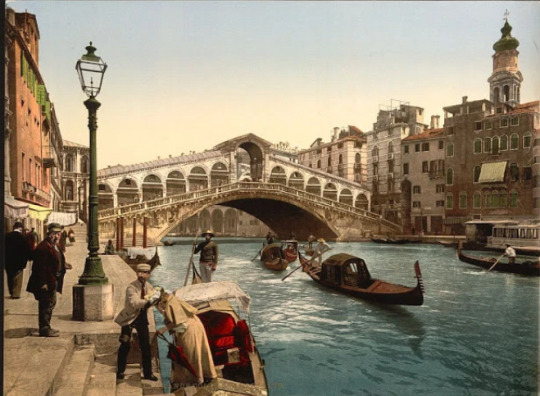
Even though you can not travel back in time to the 19th century, this is what Venice looked like 125 Years Ago | Open Culture … Historical photography. The image has been colorized using a photocrom process. "Photochrom prints are ink-based images produced through 'the direct photographic transfer of an original negative onto litho and chromographic printing plates.'" (SOURCE: The Library of Congress).
2 notes
·
View notes
Photo

Pulpit terrace print This is a really neat image. This is Pulpit Terrace, part of Yellowstone’s Mammoth Hot Springs named because it looks so much like a preacher’s pulpit from the side that you can find old photographs of people standing behind it and looking like they’re preaching (see our twitter page below). This image shows it as it appeared in 1898, but it’s not a photograph.
This is a photomechanical print, a printing of an area based on a photographic negative. The color in the shot may reflect a bit of artistic expression, but this is still a pretty neat, color look at how a terrace in Yellowstone could have appeared before the advent of color photography, and what the rocks of Mammoth Hot Springs looked like before large numbers of visitors affected the landscape. -JBB Image credit: Photochrom Co/Library of Congress http://www.loc.gov/item/2008678251/ More: https://twitter.com/TheEarthStory/status/639507092487958528
144 notes
·
View notes